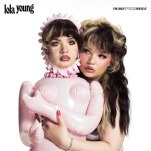Why The Muppet Christmas Carol Is the Best Scrooge Story

A Christmas Carol is one of the most adapted stories of all time, and even with decades of new takes on Charles Dickens’ classic tale to consider, it’s got a fairly high batting average on the screen. Sure, there are less-than-stellar versions, but whether you’re talking about the Rankin/Bass animated special The Stingiest Man in Town, Patrick Stewart’s TV movie version, or Alastair Sim’s classic take on Scrooge, there are a lot of can’t-miss Christmas Carols floating around pop culture.
Then there’s The Muppet Christmas Carol.
Brian Henson’s classic adaptation of the Dickens story, which turns 30 years old this month, is certainly not the first Christmas Carol to get a little irreverent with the material, nor is it the first to go a little more kid-friendly by adding lovable new twists on classic characters like Bob Cratchit and Mr. Fezziwig. But three decades and loads of internet love after its release, The Muppet Christmas Carol stands out as much more than an extremely accessible adaptation of a classic of Victorian literature. Thanks to the unique alchemy that comes from having the Muppets face off with a towering actor in this particular story, the film stands today as not just a great Christmas movie, but quite possibly the best Christmas Carol adaptation of all time.
Dickens wrote A Christmas Carol in part to address the plight of the disadvantaged, a cause near and dear to his heart for much of his life. He’d already made speeches advocating for the poor and working class around England, and considered writing a pamphlet to continue his advocacy, then decided a fictionalized exploration of the same themes might better serve the cause. So, A Christmas Carol was born through about six weeks of feverish writing and long walks around London, and an immortal holiday tale was born.
But despite its seasonal impact and enshrinement as a Yuletide essential, it’s always worth noting that Dickens never intended A Christmas Carol’s message to apply only at Christmas. The entire point in crafting a miserly villain like Ebenezer Scrooge was to highlight for his readers just how awful it would look if someone really was that cold-hearted and awful while everyone around him was happy, charitable and grateful. He wanted the contrast that the Christmas season brought to Scrooge’s demeanor to heighten the comparison for readers, so that he could then put to them a simple idea: What if the values we espouse at Christmas could apply all year long? It’s why, at the end of the story, Scrooge offers this promise to the Ghost of Christmas Yet to Come:
“I will honour Christmas in my heart, and try to keep it all the year. I will live in the Past, the Present, and the Future. The Spirits of all Three shall strive within me. I will not shut out the lessons that they teach!”
-

-

-

-

-

-

-

-

-

-

-

-

-

-

-

-

-

-

-

-

-

-

-

-

-

-

-

-

-

-

-

-

-

-

-

-

-

-

-

-








































